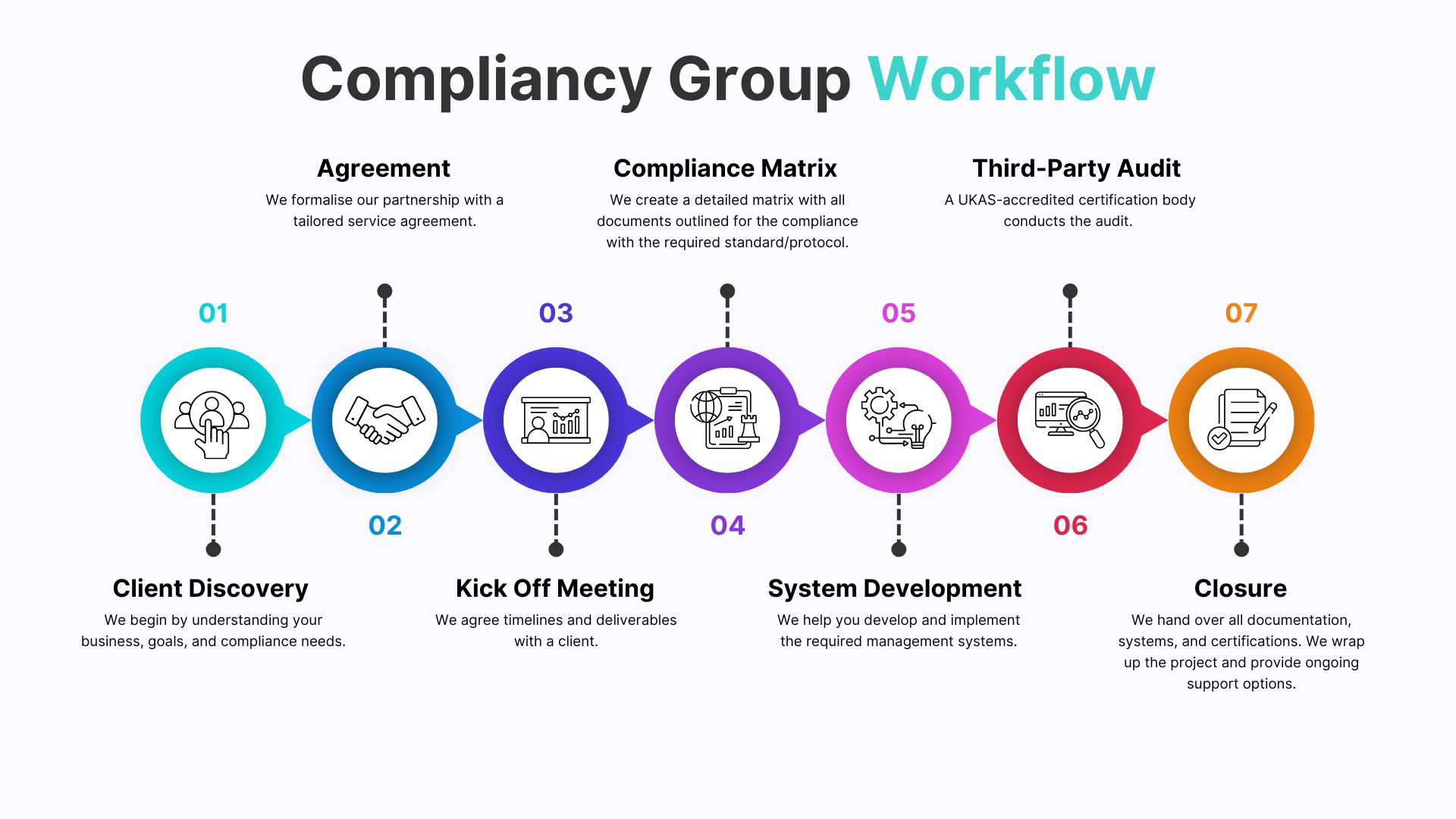We're Here To
Help
A Temporary Works Inspection is a critical assessment designed to ensure all temporary structures—such as scaffolding, formwork, shoring, and falsework—are safe, stable, and compliant with current regulations. Completing regular temporary works inspections demonstrates your business’s commitment to site safety, legal compliance, and proactive risk management – trusted by clients, partners, and regulators across construction and infrastructure sectors. With robust temporary works management, you reduce the risk of structural failures, protect your workforce, and maintain operational reliability. Compliancy Group guides you through every step – making temporary works compliance clear, practical, and a genuine business advantage.
We understand the complexities of temporary works design, installation, and inspection. Our team brings hands-on experience with statutory assessments, stability checks, and industry best practices.
No one-size-fits-all here. Whether you need initial inspections, ongoing monitoring, documentation support, or compliance advice, our services are fully customised to your operations. We offer flexible support packages—from essential guidance to comprehensive on-site consultancy.
We work exclusively with UKAS-accredited certification bodies and maintain a 100% pass rate for compliance assessments. Our clients trust us to deliver results that stand up to audit and regulatory scrutiny—helping you achieve, maintain, and leverage temporary works compliance for business growth.
Compliance shouldn’t slow you down. We help you build safer sites, reduce risk, and improve operational efficiency—so you can focus on your core business.
You’ll work directly with our expert team, including leadership involvement from our CEO. We pride ourselves on responsive communication, clear guidance, and ongoing support throughout your compliance journey.
Demonstrate compliance to secure contracts and reassure clients or insurers.
Show your commitment to site safety, legal responsibilities, and industry standards.
Minimise the risk of accidents, delays, and costly liabilities.
Enhance your standing as a responsible and trusted organisation.
Regular inspections and compliance checks foster a culture of ongoing safety and operational excellence.
Strengthen Reputation
From initial inspection to ongoing support, our team ensures you’re always prepared and confident.
We streamline compliance processes, freeing up your team to focus on core business activities.
Services are tailored to your specific business needs, not generic templates.
Ongoing support, training, and regulatory updates keep your business compliant long after inspection.
Our 100% compliance pass rate and exclusive partnerships with UKAS-accredited bodies mean you’re in safe hands.

Temporary Works Coordinator (TWC) The TWC is not normally the designer, but is responsible for ensuring that a suitable temporary works design is prepared, checked and implemented on site in accordance with the relevant drawings and specification.
Temporary Works Procedures BS 5975 outlines the necessary procedures for managing temporary works, ensuring that all stages of the process are carried out systematically. This includes planning, design, checking, implementation, and monitoring of temporary works, with a focus on minimising risks and ensuring safety.
Statutory aspects to temporary works including inspections, stability and design. Avoiding failure – the '3Ps'; people, process and product.
Indeed, it is thought that insufficient bracing is one of the most common causes of failures during construction. During construction, the load on an incomplete structure varies and temporary structures may become unstable.
A Temporary Works Register (TWR) is required for each home building operation, development or site. The TWR is used to record all site TW's along with Design, Design Checking, Approval, pre-use and in use inspections.
The Temporary Works Risk Assessment considers the common hazards and the precautions you can take, and looks at risks involved with formwork/falsework, supports, work at height, lifting operations, manual handling, materials, and slips and trips.
What are temporary works? Temporary works (TW) are the parts of a construction project that are needed to enable the permanent works to be built. Usually the TW are removed after use - eg access scaffolds, props, shoring, excavation support, falsework and formwork, etc.
Yes, a crane lift can be considered temporary works in construction. Temporary works are parts of a construction project designed to enable the construction of the permanent works and are typically removed after use. Crane lifts, along with elements like scaffolds, props, and shoring, fall under this category
The Temporary Works Coordinator (TWC) This individual is responsible for the overall management and coordination of temporary works. Their responsibilities include approving temporary works designs and verifying that they comply with standards.